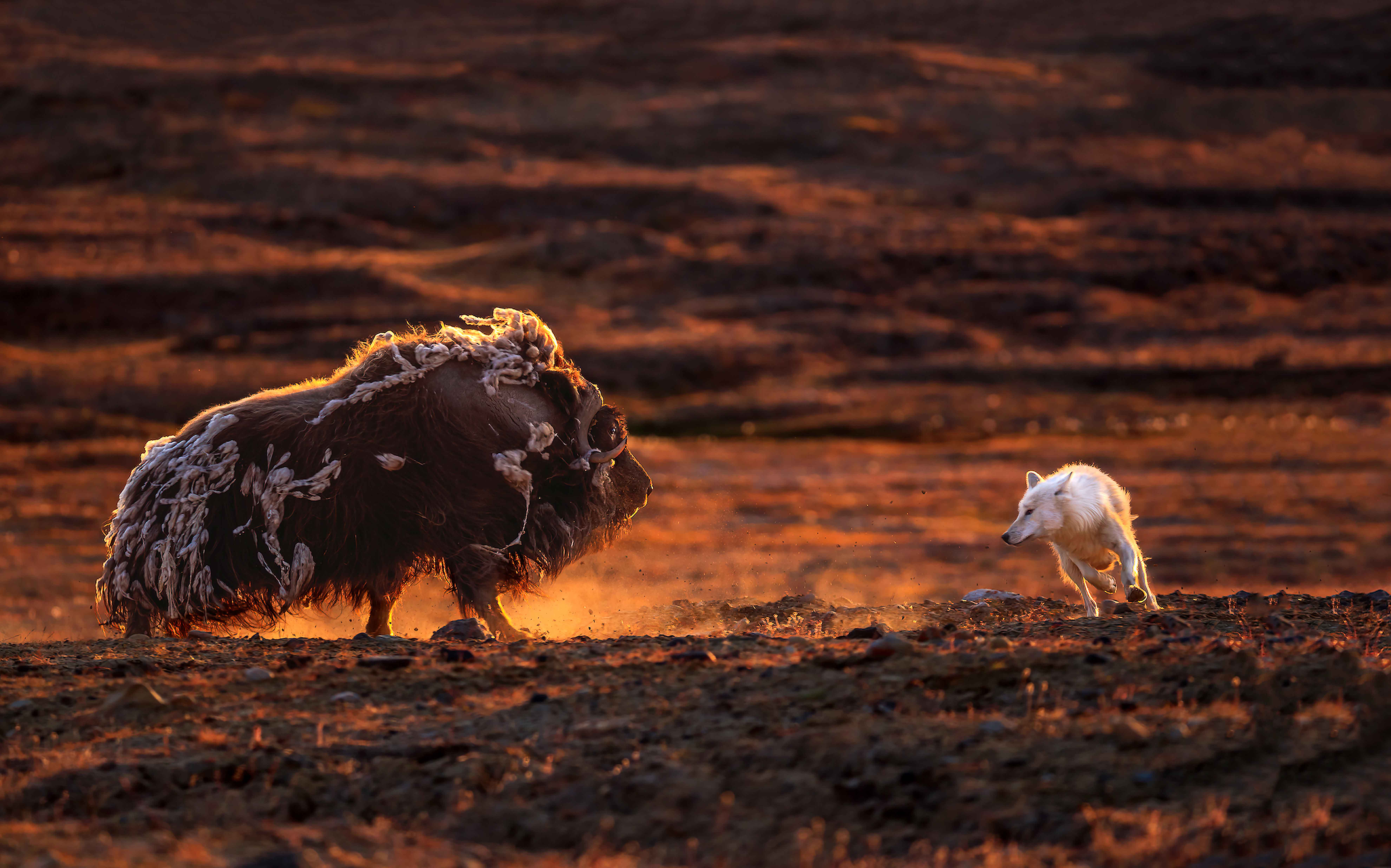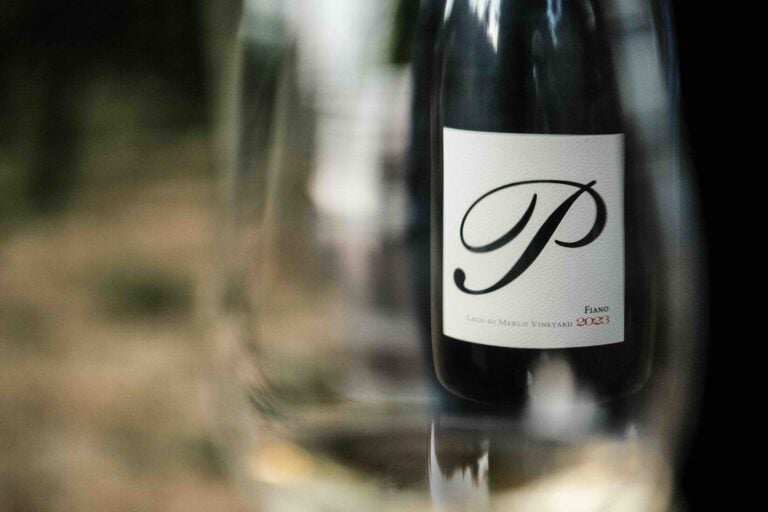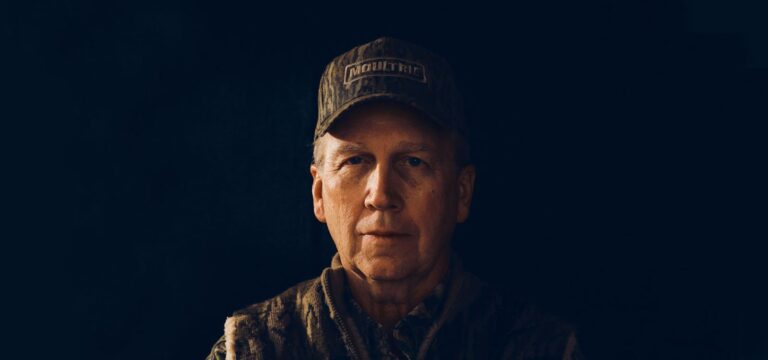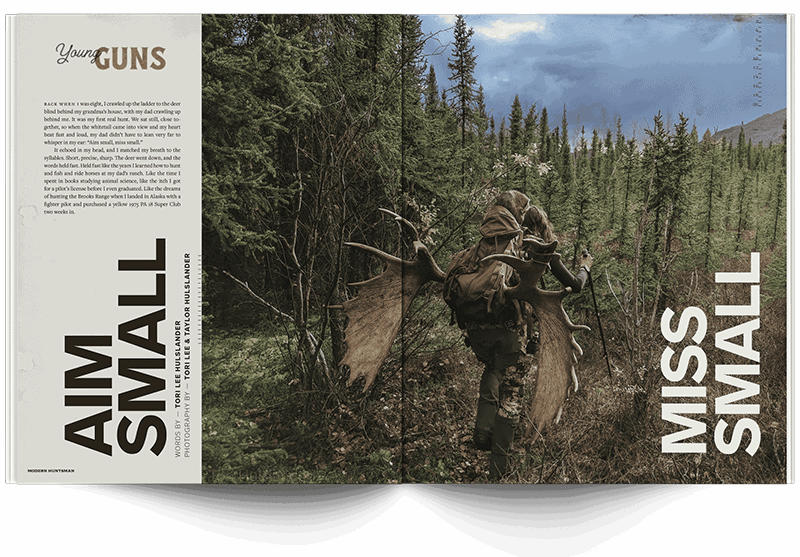The wolves killed a six-month-old musk ox under the orange glow of an Arctic twilight. The calf was at least double the size of each wolf, and after the 20-minute struggle, the wolves stood still, their bellies and tongues pulsing rapidly under the stress of anaerobic effort. In the distance, little howls pierced the frigid air — the pups needed attention. The three panting wolves turned together toward their howls and trotted off over the hill to join the rest of their family.
I’d been with this pack of wolves for a month now, immersed in recording every moment that I was able to through photography, video and writing. I was there to better understand the ancient relationship between humans and canids, one that goes back tens of thousands of years to the first widespread domestication of a wild animal by humans — wolves.
I worked quickly while the pack was out of sight retrieving the pups, as I didn’t want them to see me crossing the invisible boundary between two predators. I made a deep, straight incision with my knife along the left side of the musk oxen’s spine and two more incisions perpendicular to the spine near its shoulder and hip, peeling the skin back to expose the Longissimus muscles — what hunters like to refer to as backstrap. Steam rose from the muscle as enduring life continued to fade from the dead calf. My cold hands welcomed the warmth as I separated dense muscle from bone. Later, when I returned to basecamp, my companions and I were grateful for the fresh meat.
***
The time that I’ve spent with wild wolves, engrossed in the pulse of their daily life,




